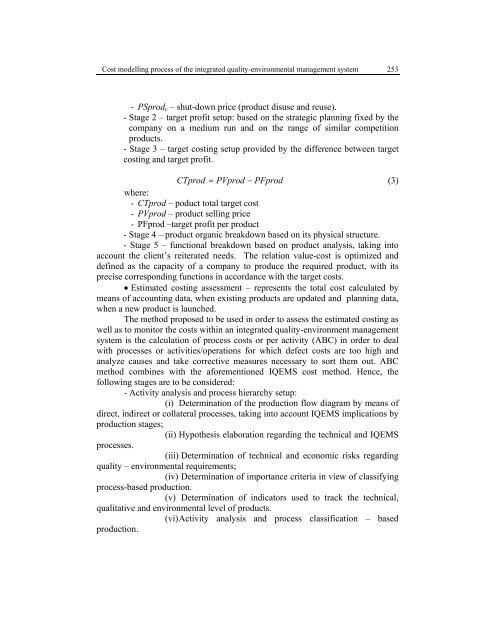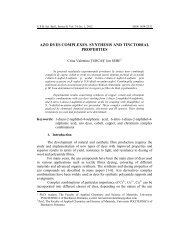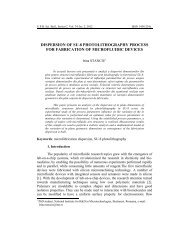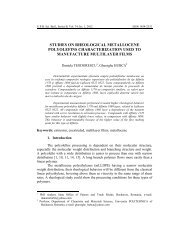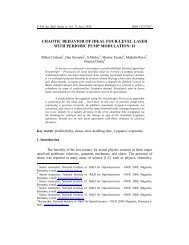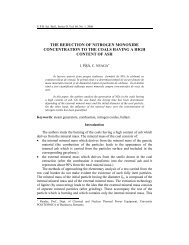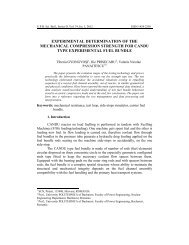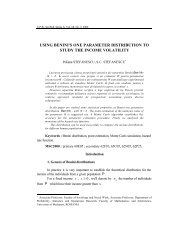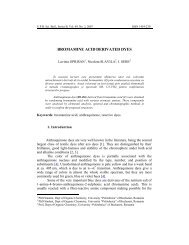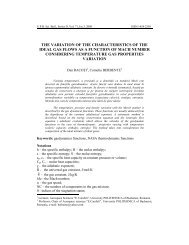integrated quality-environment management ... - Scientific Bulletin
integrated quality-environment management ... - Scientific Bulletin
integrated quality-environment management ... - Scientific Bulletin
Create successful ePaper yourself
Turn your PDF publications into a flip-book with our unique Google optimized e-Paper software.
Cost modelling process of the <strong>integrated</strong> <strong>quality</strong>-<strong>environment</strong>al <strong>management</strong> system 253<br />
- PSprod c – shut-down price (product disuse and reuse).<br />
- Stage 2 – target profit setup: based on the strategic planning fixed by the<br />
company on a medium run and on the range of similar competition<br />
products.<br />
- Stage 3 – target costing setup provided by the difference between target<br />
costing and target profit.<br />
CTprod = PVprod − PFprod<br />
(3)<br />
where:<br />
- CTprod – poduct total target cost<br />
- PVprod – product selling price<br />
- PFprod –target profit per product<br />
- Stage 4 – product organic breakdown based on its physical structure.<br />
- Stage 5 – functional breakdown based on product analysis, taking into<br />
account the client’s reiterated needs. The relation value-cost is optimized and<br />
defined as the capacity of a company to produce the required product, with its<br />
precise corresponding functions in accordance with the target costs.<br />
• Estimated costing assessment – represents the total cost calculated by<br />
means of accounting data, when existing products are updated and planning data,<br />
when a new product is launched.<br />
The method proposed to be used in order to assess the estimated costing as<br />
well as to monitor the costs within an <strong>integrated</strong> <strong>quality</strong>-<strong>environment</strong> <strong>management</strong><br />
system is the calculation of process costs or per activity (ABC) in order to deal<br />
with processes or activities/operations for which defect costs are too high and<br />
analyze causes and take corrective measures necessary to sort them out. ABC<br />
method combines with the aforementioned IQEMS cost method. Hence, the<br />
following stages are to be considered:<br />
- Activity analysis and process hierarchy setup:<br />
(i) Determination of the production flow diagram by means of<br />
direct, indirect or collateral processes, taking into account IQEMS implications by<br />
production stages;<br />
(ii) Hypothesis elaboration regarding the technical and IQEMS<br />
processes.<br />
(iii) Determination of technical and economic risks regarding<br />
<strong>quality</strong> – <strong>environment</strong>al requirements;<br />
(iv) Determination of importance criteria in view of classifying<br />
process-based production.<br />
(v) Determination of indicators used to track the technical,<br />
qualitative and <strong>environment</strong>al level of products.<br />
(vi) Activity analysis and process classification – based<br />
production.


